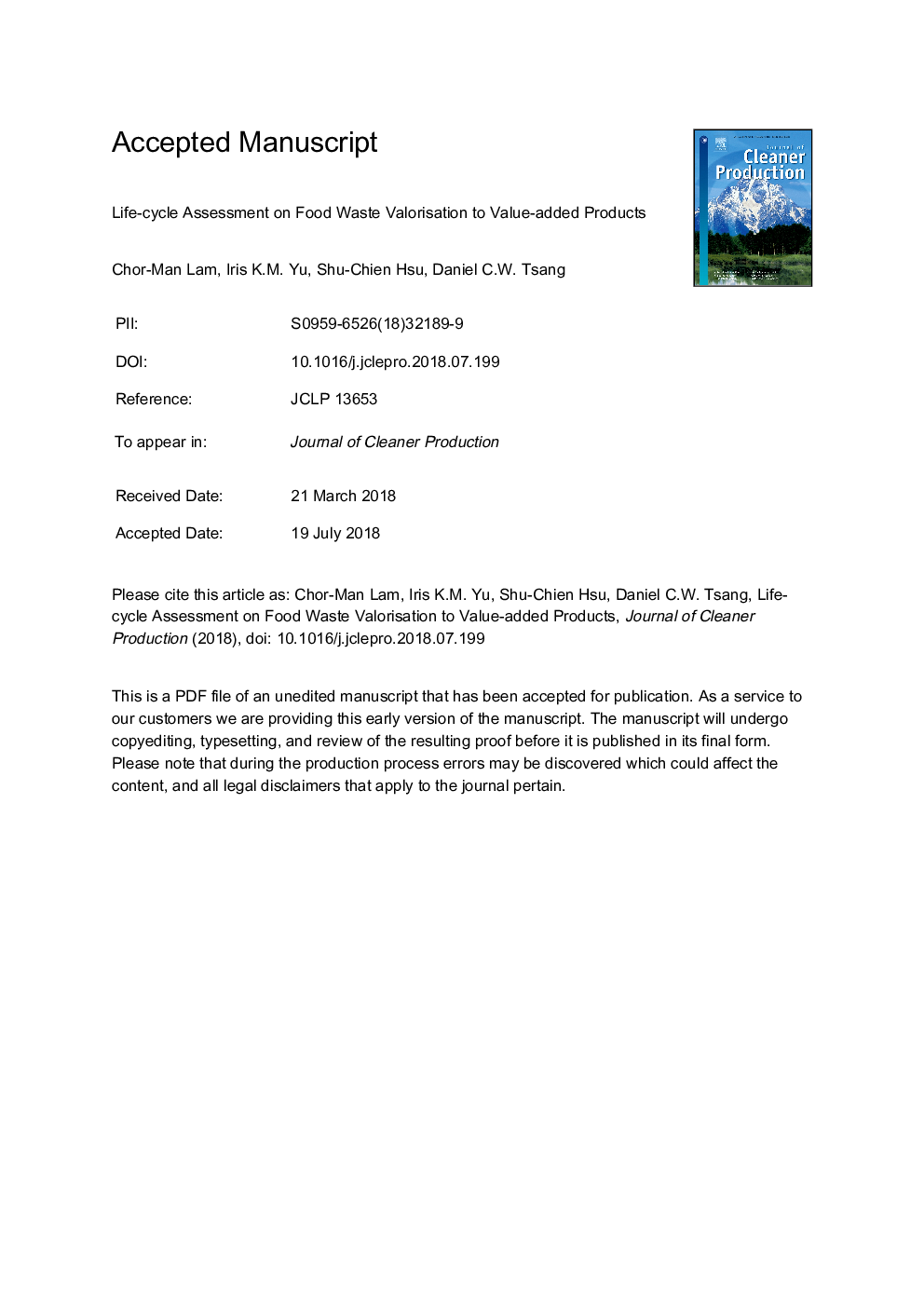| Article ID | Journal | Published Year | Pages | File Type |
|---|---|---|---|---|
| 8093311 | Journal of Cleaner Production | 2018 | 26 Pages |
Abstract
Food waste can serve as a potential substitute for fossil-derived feedstocks for producing value-added chemicals, such as hydroxymethylfurfural (HMF), yet their environmental performance has not yet been evaluated, thus impeding informed decision-making. This study aims to develop a life-cycle assessment (LCA) framework to guide decisions on selecting the most environmentally favourable food waste valorisation option to produce HMF. An LCA framework was developed to assess the environmental performance of eight food waste valorisation scenarios with different combinations of solvents, catalysts, and experimental conditions. The environmental impacts associated with the use of water solvent, organic co-solvents, metal catalysts, as well as the reaction temperature and time were estimated. Experimental data were analysed for building the life-cycle inventory. The conversion of bread waste using water-acetone medium with the catalyst aluminium chloride (AlCl3), at 140â¯Â°C for 30â¯min, was revealed to be the most environmentally favourable food waste valorisation option, due to the utilisation of less polluting co-solvent (acetone) and catalyst (aluminium chloride) as well as the relatively high yield of HMF (27.9 Cmol%). It is expected that when the development of large-scale valorisation systems become more mature and information is more readily available, the decision-supporting tool could be expanded to (1) evaluate the pilot-scale and the industrial-scale food waste valorisation for HMF synthesis, and (2) include the economic performance of the scenarios so that more comprehensive results could be provided to assist decision-making.
Keywords
Related Topics
Physical Sciences and Engineering
Energy
Renewable Energy, Sustainability and the Environment
Authors
Chor-Man Lam, Iris K.M. Yu, Shu-Chien Hsu, Daniel C.W. Tsang,
